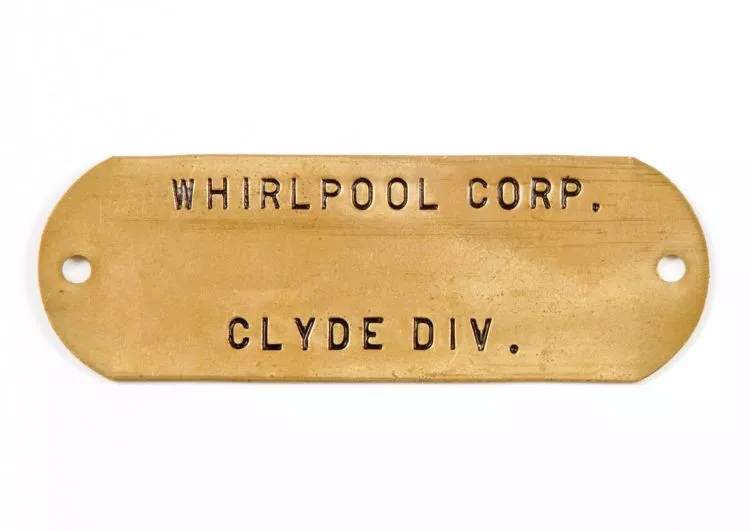One of the simplest and most effective ways to customize your jewelry is to stamp initials, dates, or names into metal tags or blanks that can be affix to any necklace or bracelet. Metal jewelry tags are an excellent way to practice your stamping technique because it takes skill to get it just right. To assist with your jewelry-making endeavors’, we have put together the following beginner’s guide to metal stamping.
The Tools You Will Need:
As with each new endeavor, creating custom metal tags requires its own set of tools and accessories that you will need in order to get start. If you plan to utilize metal stamping for quite a lot of projects, it can be an expensive hobby or craft to undertake, but when you have the tools, it ought to last you for a very long time. Therefore, these things are more investment pieces! All of them are quite simple to locate online or at craft supply stores. Beginner kits frequently include the majority of the following list:
Hammer for stamping
Stamp metal (letters, numbers, icons, shapes)
Inking block
Metal labels or blanks
Sticker tape
Polishing material
Where Should You Start?
Like with any endeavor, it is preferable to begin simple and simple and practice a lot before attempting the final product. Make sure to get some practice blanks or bigger tags when you buy your stamping blanks so you can use them to fine-tune your technique. Beginners should stick to flat surfaces because they are the easiest to mark up and then stamp with the desire design. It all depends on your technique.
The effectiveness of metal stamping can be influence by a few different factors, thus it is crucial to practice as often as possible.
Impact
Choosing the proper amount of force with which to press the stamp might be challenging. You cannot really try again if you raise up your stamp and find that you have barely create a mark unless you can precisely line it right back. Naturally, with practice, you’ll get the knack of it and things will get better. The majority of metals require a relatively forceful hammer blow before any stamping can actually take place. However, bear in mind that certain alloys may actually require different procedures due to their different densities. For instance, aluminum will not necessitate as much impact as brass will.
Placement
Before starting your project, it is crucial to choose your design and confirm that your text or picture will fit onto the select blank. Before stamping anything, mark the location with masking tape and a pencil. A pretty clever method to make your artwork as neat as possible is to mark out the center and work outward. If you want your finish letter to be position at a 90° angle, always make absolutely certain your stamp is facing the proper way up.
Now Comes the Fun Part
Start considering your designs after you believe you have had enough practice and are ready to embark on the real crafting. You might produce rough sketches of designs for variously shape tags or consider making individualize presents for close friends and relatives (or for yourself).
Here are some fantastic start stamping projects:
jeweler initial charms – the best project for beginners with few letters
Name pendants are a unique way to personalize a lovely bead necklace or basic chain.
Special date tags are ideal for dates such as weddings, engagements, and birthdays.
Just as easy as name pendants are pet name tags.
Since the completed products can appear so professional once they’ve been polished up, stamping is a truly satisfying process. Even if the indentations on your stamps are irregular or sloppy, this can give your work a lovely homemade, rustic vibe.
Additional Tools and Finishing Touches
If you are not entirely satisfied with the standard stamping finish, there are options to improve or enhance your items by utilizing tips and additional equipment to make them more appealing to you.
Letters with Impact
This is a really easy look to achieve. To make the stamped area stand out even more, carefully fill it in with a straightforward, fine Sharpie. If you erroneously go outside the lines, do not worry—a polishing cloth will take care of it! Stamping blank enamel can produce a similar result, and it will be considerably more durable than Sharpie, which may fade over time. The enamel will produce a very polished finish ideal for jewelry pieces that will endure use-related wear and tear.
Punching Holes
You can purchase specialized equipment that will poke a hole in the metal using the same method as stamping or in the shape of punch pliers if your blanks did not already have holes in them and you wish to connect them to an item of jewelry.
Surface Effects
If you desire a classic look, you can give your metals an aged effect. You might soak your stamped things in a container of vinegar that covers your selected item to distress/age since some metals react to the acid in vinegar very quickly.
Shapes
As you might already be aware, blanks may be found in a wide variety of forms and sizes that are a lot of fun to play with. If you do not need a lot of different forms, just purchase the blanks you really want or the ones you may require for your project.
Dapping
A dapping block can be used to shape simple blanks into curves. This piece of equipment contains a number of different-sized circular daps in which you may insert your blank. Round tools are then hammered on top to give your blank a curved or cupped appearance. Dapping has no impact on the stamped design.
Conclusion
We can assist you whether you are a novice to the metal stamping procedure or you simply want to refresh your memory. We will go through the specifics of how to stamp metal as well as the fundamentals of metal stamping for newbies in our guide to the metal stamping process. Read on to start your journey.








